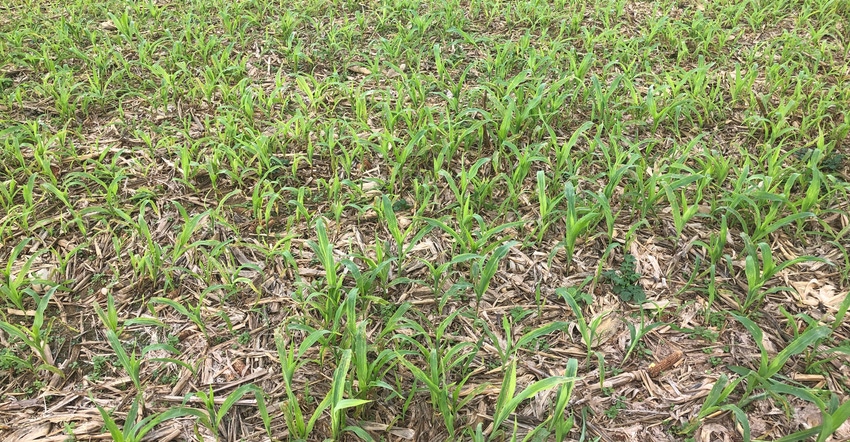November 4, 2021

Some of you may be hoping for a hard freeze so you no longer have soybeans or corn growing in fields harvested early between wet spells this fall. Even though some combine loss is inevitable, no one likes to see proof that they left dollars in the field, growing before their eyes.
Halfway through October, it was the seventh-wettest and second-warmest October on record going back into the 1880s in central Indiana, based on data from the National Weather Service in Indianapolis. Some areas have been even wetter than Marion County.
Ample moisture and plenty of warmth meant corn kernels and soybeans left behind during harvest germinated quickly and grew rapidly, turning fields that should have been brown to green instead.
So, if you didn’t take time to get out of the cab and check for harvest losses, Mother Nature did it for you this year. Then she made a visual report for everyone to see.
Silver lining
There are two bright spots to this unusual condition that Mother Nature created. First, every bean or corn kernel that germinated this fall and will be killed by an eventual freeze is one less soybean or corn kernel that can germinate next spring. That’s especially a plus for fields going to soybeans in ’22. Volunteer corn in soybeans has become a larger issue recently since volunteer corn plants are tolerant to several broad-spectrum herbicides.
Second, and most important, if you saw more green plants growing than you like, it gave you incentive to double-check settings on your combine or inspect for wear that may be leading to excessive losses. It may also prompt you to check for losses before you finish harvest if you still have more fields to go.
Also, on the plus side, it’s possible the losses may not be as extensive as they look. Four soybeans or two corn kernels per square foot amount to 1 bushel per acre of loss. On 200 bushels of corn per acre, that’s only 0.5%, a lofty goal, even today. If every kernel left behind germinates, two kernels per square foot can look like a lot of corn.
Consider reading the October issue of Indiana Prairie Farmer again. Several articles, including the cover story, dealt with how to determine losses, and how to make corrections if they are higher than you like.
Those stories are based on a two-year replicated trial by Indiana Prairie Farmer, Purdue University Agronomy and the Throckmorton Purdue Ag Center. At five of six harvest dates over two years, total field losses in corn averaging 220 bushels or more per acre were about 1 bushel per acre, or 0.5%. The sixth harvest date was after a late November windstorm, and losses were over 3 bushels per acre, mainly due to ears left behind.
This was accomplished with a 2010 Case IH combine. The Throckmorton farm crew takes pride in checking for and minimizing losses. Most losses that did occur were due to shelling at the head in drier corn.
Comments? Email [email protected].
You May Also Like




